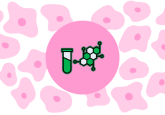Is the future bright for DBS?

I am convinced that microsampling, particularly for small animal and pediatric studies, is here to stay. The advantages in animal welfare are too great to be ignored and this coupled with the resulting improvement in data quality are an added bonus. DBS ticks all the boxes for a microsampling technique, but it also has a number of drawbacks when operated in its optimal sub-punch, rather than whole spot elution mode.
The sub-punch elution approach has the advantage that there is no need to apply an accurate volume of blood to the card at the time of sampling, but it suffers from the fact that variations in sample hematocrit introduce an assay bias.
Although this assay bias would be considerable if the samples had a hematocrit at one end of the scale and were assayed against standards at the other end, the bias can be limited to manageable levels by preparing standards at the centre of the expected sample hematocrit range. Also, a typical hematocrit range within a particular sample set is unlikely to be that wide, and seldom will it cover more than half the theoretical hematocrit range.
Alternatively, the assay bias can be compensated for by applying an accurate volume of blood to the sample card at the time the sample is generated and extracting the whole of the dried sample. The whole spot approach also has the advantage that it compensates for any possible variability in homogeneity within the spot itself. On that point, the homogeneity of the spot is a contributor to the overall precision of the process. Thus if the within run CV is acceptable so is the homogeneity.
It is heartening to see that a number of substrates and techniques have appeared recently that compensate for the bias caused by changes in hematocrit, and it may well be one of these that drives the next generation of dried sample analysis.
Our expert opinion collection provides you with in-depth articles written by authors from across the field of bioanalysis. Our expert opinions are perfect for those wanting a comprehensive, written review of a topic or looking for perspective pieces from our regular contributors.
See an article that catches your eye? Read any of our articles below for free.





